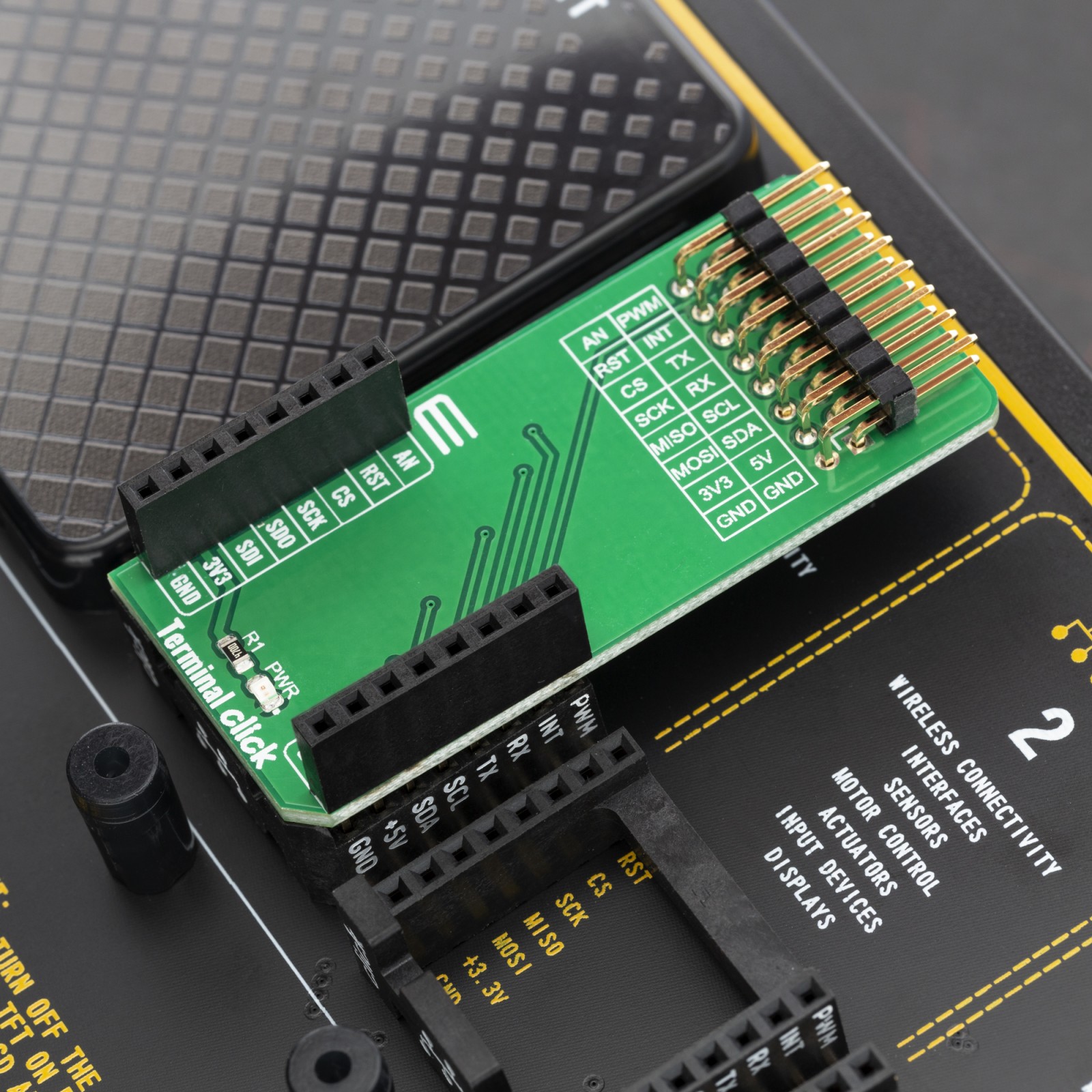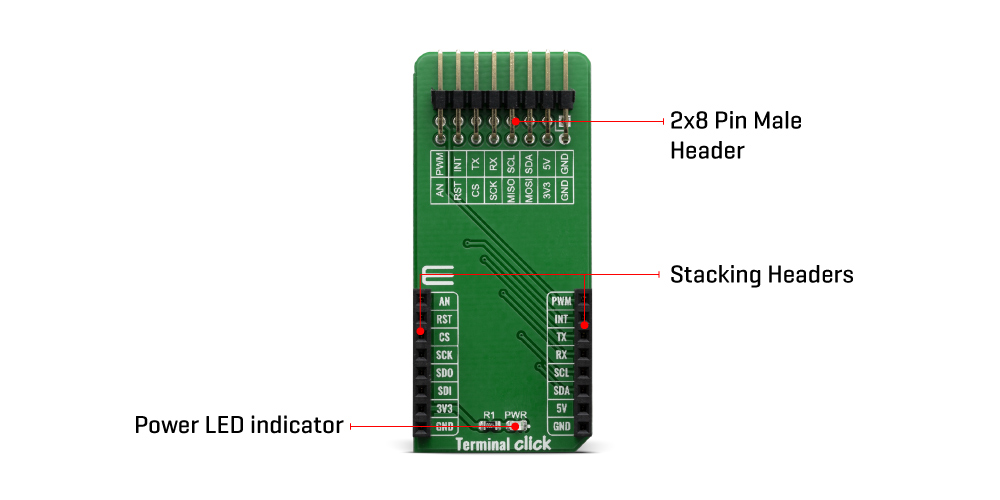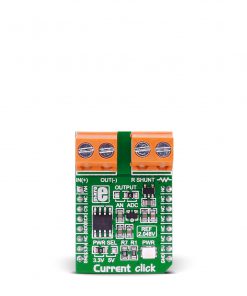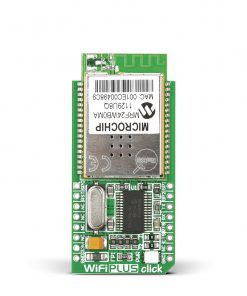Subtotal: R1,750.00
Terminal Click
R145.00 ex. VAT
Terminal click is a mikroBUS™ socket expansion board, which provides an easy and elegant solution for adding the external connection capability to the click board™, plugged on a mikroBUS™. Featuring stacking headers makes it easy way for expanding the connectivity of the development system with the mikroBUS™, while keeping the bus free to use with any click board™.
Terminal click is supported by a mikroSDK compliant library, which includes functions that simplify software development. This Click board™ comes as a fully tested product, ready to be used on a system equipped with the mikroBUS™ socket.
Stock: Lead-time applicable.
| 5+ | R137.75 |
| 10+ | R130.50 |
| 15+ | R123.25 |
| 20+ | R118.61 |

 tRF Click
tRF Click  Alcohol 3 Click
Alcohol 3 Click 
















